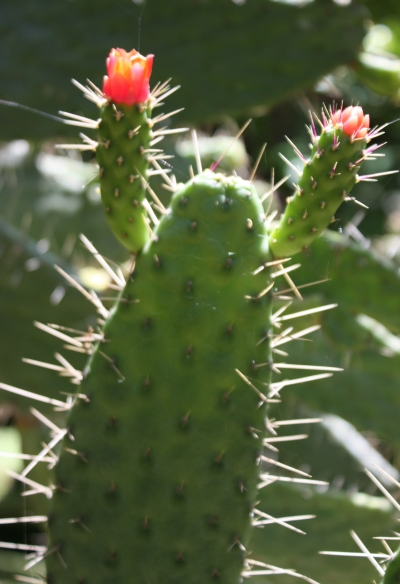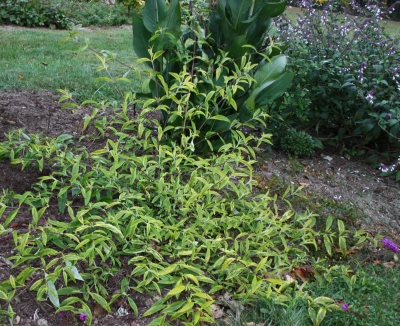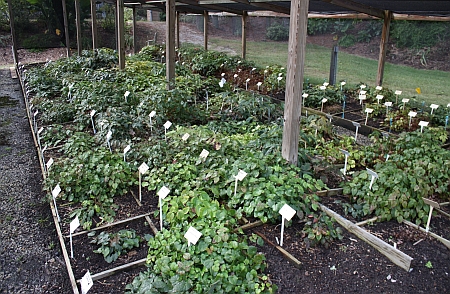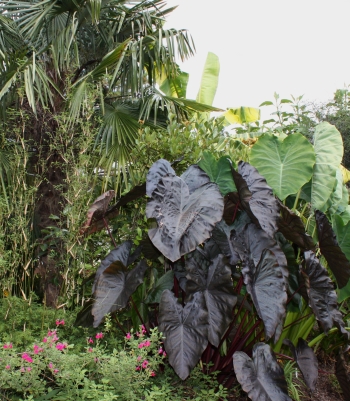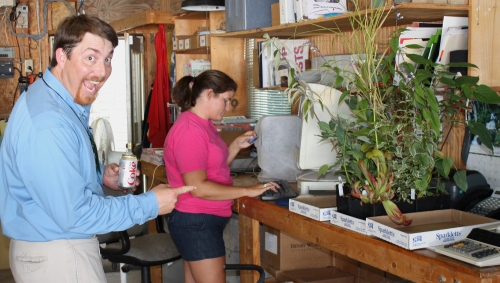Just kidding. We have no buffalo on the campus of Virginia Tech, just lots and lots of students with the flu. Yuck. But this is much more interesting:
Bouteloua dactyloides (bless you!), better known as buffalo grass:
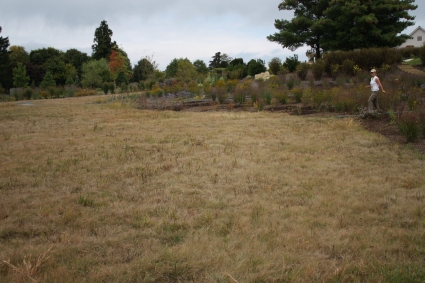
We’ve recently added a 1-acre meadow to our on-campus teaching and display garden (the Hahn Horticulture Garden at Virginia Tech).
Native trees, shrubs, perennials,and grasses surround a central lawn of buffalo grass. As one of the components of tall- and short-grass prairie, it is a popular forage in the west and midwest. Toughness and no-mow-ability makes buffalo grass a candidate for the low-maintenance lawn. We chose the cultivar ‘Bowie’, which has been reported as a good choice for the Mid-Atlantic…more cold and moisture tolerant. But it’s not cheap – ran us $15/lb with a seeding rate of 3lbs/1000 sq ft. We ordered 1/4 acre’s worth. Our horticulturist Paul calibrated the spreader not once but three times, and was still nervous.
We’re pretty happy with the progress – it’s filling in nicely after 18 months. Once established, buffalo grass will pretty much choke everything else out, but until then, broadleaf weeds and crabgrass are a bit of a pain. Extremely drought resistant, it also handled this year’s surplus rainfall with no problems.
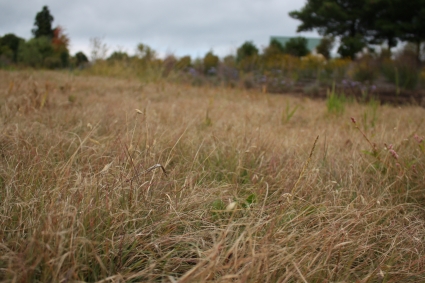
The best way I can describe it is, er, cute! It’s so fluffy, and forms pet-able 6″ tall tussocks with little seed heads dancing about. One just might, after a hard day of academia-induced anxiety, want to lay down in it and make a “grass angel”.
We’ve already had a light frost, hence the tawny color. This presents a teaching opportunity: most of the turf around here is tall fescue or blue grass – fairly evergreen, cool-season grasses. Buffalo grass WILL turn golden-brown in winter, and we’ll get lots of questions as to whether or not our meadow is “dead”. No, it’s just resting!
If you’re thinking of trying buffalo grass or something other than run-of-the-mill turf for your lawn (or even ripping it out altogether), check out ideas from Susan Harris and friends at www.lawnreform.org
